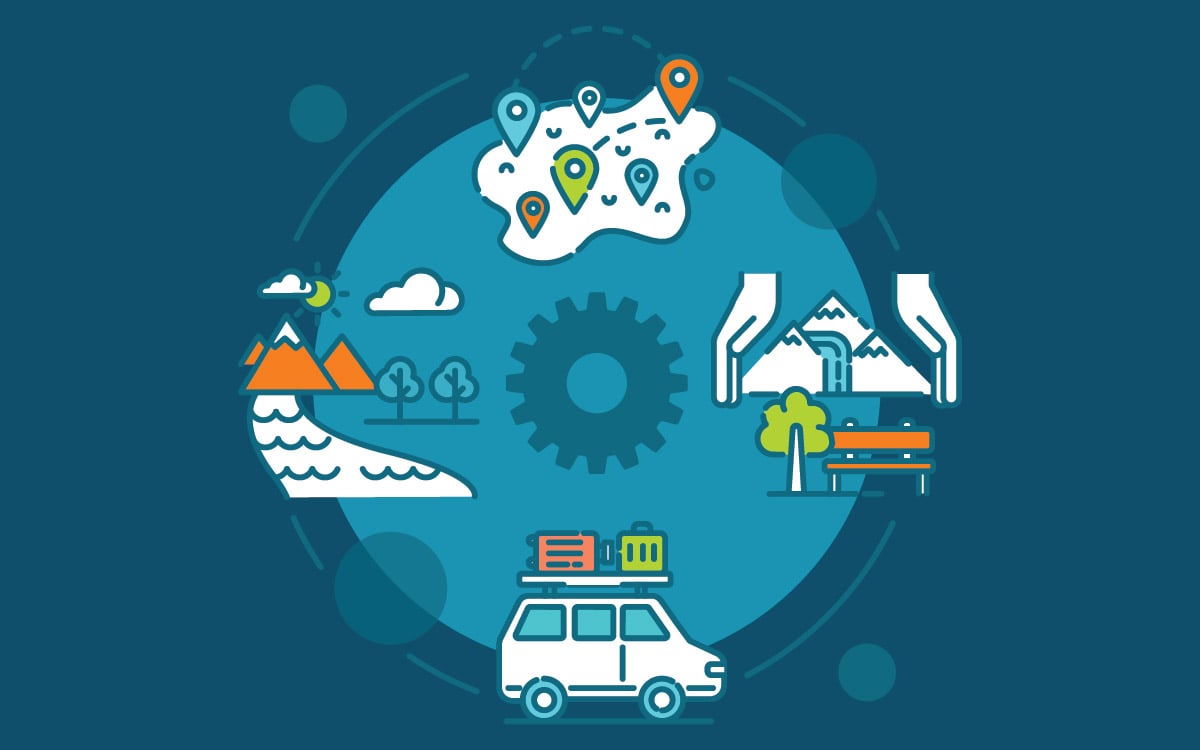
Sustainability has been a buzzword for some time, but today, it’s affecting consumer decision-making on a daily basis. And travel decisions are no different.
According to Booking.com’s 2021 Sustainable Travel Report, 83% of travelers think sustainable travel is vital. Of the 29,000 travelers surveyed, 61% said the pandemic has made them want to travel more sustainably in the future.
With climate change and social issues on the rise, this trend won’t be going away anytime soon – if ever. Destination marketing organizations (DMOs) and other tourism and hospitality marketers have a role to play here, with the opportunity to promote sustainable travel options that today’s traveler is seeking. Plus, DMOs have the platform to encourage travel practices that are light on destination communities and light on the environment. But like any good marketing, it has to be authentic.
First, let’s take a look at the impact travel can have on communities and the environment.
The Impact Tourism Has on Communities
For cities that rely on tourism as a large part of their economy, tourism is a valuable asset as much as it is a thorn in their side. While tourism generates necessary income for these destinations and provides a livelihood for its local businesses, it also takes a toll on the community.
One of the most talked-about examples is the state of Hawaii. According to a publication by the University of Hawaii, “Over the past ten years, as Hawai‘i’s visitor numbers have shot up, resident satisfaction has dropped in direct proportion,” with the general feeling that that tourism exists for the benefit of visitors at the expense of locals.
In every tourism-dependent city, tourists bring crowds, lines, more trash; they weigh on local infrastructure; they can even spread harmful viruses like COVID-19. This creates complicated feelings between locals and visitors, making travel a difficult experience for everyone.
Beyond community impacts, the environment feels the effects of tourism as well.

The Impact of Travel on the Environment
Many sources report that tourism contributes anywhere from 5-11% of the world’s greenhouse gases. According to the International Council on Clean Transportation, around 2.4% of global CO2 emissions come from aviation. And while road tripping to a destination seems like the better alternative, driving can omit similar amounts of CO2 depending on how many passengers are in the vehicle and the vehicle you’re driving.
Not to mention, tourism can also have a negative impact on natural features that people like to visit through erosion and overuse and can disturb the natural patterns of wildlife.
So what can tourism marketers do to reduce the negative impacts of tourism and boost the positive ones?

How Destination Marketing Organizations Can Do Better
As cities reopen their economies to tourists, they’re recognizing the need to rethink how they do tourism. There are better, more sustainable ways to promote tourism. Here’s how you can do your part.
Highlight Sustainable Options
More than 40% of travelers want it to be easier to identify when an accommodation is more sustainable. DMOs can highlight hotels, restaurants, retailers and other service providers that are working to offset their environmental impact, reduce waste, and give back to the local community.
Highline Adventures, a hospitality company with accommodations in Montana and Hawaii, has been working toward better sustainability in its hotels and campgrounds. But on top of that, the company has made a point to promote local eco-tours, voluntourism opportunities and local vendors to its visitors through blogs, social media and in-hotel brochures.
Similarly, tourism marketers can meet this growing demand for sustainable tourism options by labeling them on their websites or promoting them through blogs and social media.
Use Your Platform for Tourism Management
Many people want to travel more sustainably, but they’re not totally sure how. 35% of travelers say they would like to see travel companies offering tips on how to adopt better practices while traveling. Tourism organizations have the perfect platforms for offering this kind of advice about how to leave their destinations better than visitors found them.
Bozeman, Montana, a popular destination for outdoor enthusiasts and visitors to nearby Yellowstone, has seen a massive influx of visitors since the start of the pandemic. To better manage the impact of visitors, the local convention and visitors bureau – Visit Bozeman – has partnered with local organizations and businesses to launch campaigns like Outside Kind and Be Good to BZN. Both seek to provide travelers with tips for preserving their favorite trails, cleaning up after themselves, and ways to donate to local nonprofits that are doing work to improve the community.
At PRIME, we’ve been helping DMOs and hospitality companies use travel as a force for good through digital marketing. Looking for ways to do the same? Reach out to us.
If you enjoyed this edition of PRIME Pulse, take a look at some of our other related articles:
- Why Blogging is Key to Destination Marketing
- New Tools Destination Marketers Should Know About
- 9 Types of Paid Advertising to Use for Destination Marketing
- 4 Questions to Ask When Branding a Destination



